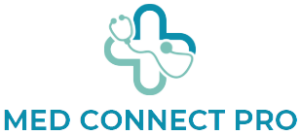Data Distribution Service (DDS) is a middleware protocol and API standard designed for real-time data sharing in distributed systems. It enables efficient and scalable data communication between various components of complex systems, making it essential in fields such as aerospace, automotive, healthcare, and telecommunications. The main objective of DDS is to facilitate the seamless exchange of information in a reliable, high-performance manner, ensuring that data is delivered promptly and accurately across multiple nodes.
One of the key features of DDS is its publish-subscribe communication model. In this model, data producers (publishers) send information without needing to know the specific data consumers (subscribers). This decoupling of producers and consumers allows for a more flexible system architecture. DDS employs a robust Quality of Service (QoS) framework that enables developers to define parameters such as data durability, latency, and reliability. This flexibility makes DDS particularly suitable for applications where timely and reliable data delivery is critical.
Another important aspect of DDS is its support for real-time systems. In many applications, especially those involving safety-critical operations, it is vital that data is exchanged within stringent time constraints. DDS achieves this through a combination of efficient data serialization, sophisticated network protocols, and mechanisms for managing network traffic. By prioritizing messages based on their importance and urgency, DDS can ensure that the most critical information reaches its destination first, thus enhancing the overall performance of real-time applications.
Moreover, DDS is designed to handle complex data types and structures, making it highly versatile for various applications. Its data-centric approach means that the focus is on the data itself rather than the communication methods. This allows developers to define complex data models and share them seamlessly across distributed systems. DDS provides rich support for various data formats and types, enabling systems to share information in a way that is meaningful and contextually relevant.
As organizations increasingly adopt IoT (Internet of Things) technologies, DDS has become even more relevant. The IoT ecosystem is characterized by a vast number of interconnected devices that generate and consume data at an unprecedented scale. DDS’s capabilities in managing large volumes of data and its inherent scalability make it an ideal choice for IoT applications. By leveraging DDS, developers can create systems that not only support real-time data sharing but also scale efficiently as the number of devices increases.
The implementation of DDS also brings several benefits to developers and organizations. First and foremost, it simplifies the integration of disparate systems. In many industries, organizations rely on a mix of legacy and modern systems that need to communicate with each other. DDS provides a common framework that bridges these gaps, allowing for smoother interoperability. This can significantly reduce development time and costs, as teams can focus on building functionalities rather than dealing with complex communication issues.
Another advantage of DDS is its support for high availability and fault tolerance. In mission-critical systems, downtime can have severe consequences. DDS incorporates mechanisms that ensure data is reliably delivered even in the face of network disruptions or failures. This resilience is achieved through features such as data replication and redundancy, which allow systems to maintain continuity and performance even under adverse conditions.
Security is another critical consideration in the design of DDS. As data is shared across networks, ensuring its confidentiality, integrity, and authenticity is paramount. DDS includes security features that enable developers to implement encryption, authentication, and access control. This focus on security helps organizations safeguard sensitive information and comply with regulatory requirements, making DDS a trusted choice for industries that handle critical data.
Despite its many advantages, adopting DDS does come with challenges. Organizations must invest time and resources in understanding the protocol and its capabilities fully. The complexity of setting up a DDS infrastructure can be daunting, particularly for teams new to distributed systems. Additionally, choosing the right DDS implementation can be crucial, as various vendors offer different features, performance characteristics, and levels of support. Careful evaluation of these options is essential to ensure that the selected solution aligns with organizational goals and requirements.
In conclusion, Data Distribution Service (DDS) is a powerful tool for facilitating real-time data sharing in distributed systems. Its publish-subscribe model, support for real-time applications, and robust QoS framework make it an ideal choice for industries that require reliable and timely data exchange. As the demand for interconnected systems continues to grow, DDS is poised to play an increasingly vital role in the development of scalable, efficient, and secure applications. By understanding its features and benefits, organizations can leverage DDS to enhance their operations, improve collaboration, and drive innovation in a data-driven world.
